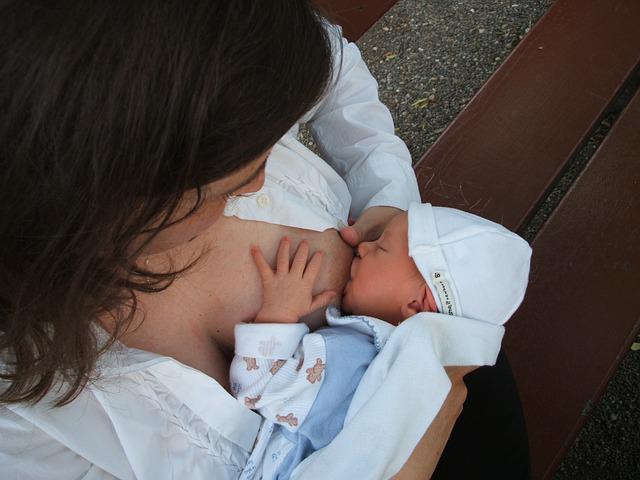How Long Does it Take for Breast to Refill? Ins and Outs of Milk Production
Breastfeeding, according to the World Health Organization, is the safest and healthiest way to feed babies. However, nursing an infant is not as straightforward as those shows you see on television. For first-time moms, breastfeeding brings along plenty of trial and error.
There are many myths surrounding breastfeeding. There are people who still believe that you can’t breastfeed while you’re sick or mothers create clingy babies when you breastfeed. One myth that many people believe, including moms, is that many mothers can’t produce enough milk.
There are instances when moms can’t breastfeed. Mothers with certain conditions like hypoplastic breasts or PCOS have true low milk supply. But true low milk supply is rare, and it typically happens to mothers who have underlying health problems.
If you’re a healthy mom experiencing low milk supply, you might be wondering how you can refill your breasts and how long it takes. The good news is that you can naturally increase your breast milk production. And no, breasts aren’t bottles that you need to refill at a specific time. (But we’ll get to that soon!)
Skip To The Following Sections
How is Breast Milk Produced?
Talking about the science behind breast milk can help reduce the mystery behind breastfeeding. Like sweat, saliva, and urine, breast milk is a natural fluid that the body produces. Women (and, in some cases, men) lactate when the right hormones come into play.
Making breast milk is a process that requires both breasts and brain. Both of these body parts play a key role in creating your baby’s next meal.
Breast milk is produced in grape-like cell clusters inside the breasts called alveoli. The milk then travels through the milk ducts and is carried towards the nipples.
Two hormones are in charge of making milk. Prolactin triggers milk production in the alveoli, while oxytocin activates the muscles that squeeze the milk into the ducts.
Your baby also plays a big role in your milk production. When your baby latches and sucks your nipples, your brain triggers the above-mentioned hormones. The more you feed your baby, the more active those hormones get.
Breast milk production can be a lot of work. Why do you think you burn 500 to 700 calories every time you feed junior? At first, breastfeeding will make you feel sore and uncomfortable. But with the proper latch, those aches should gradually disappear.
Do Mothers Run Out of Breast Milk?
As long as your baby needs breast milk, you will never run out of it. Mothers who gradually wean their infants from breast milk will notice their supplies going down. Once the demand for milk goes away, so does the supply.
Moms with low milk supply will still produce milk. However, it might not be enough to feed their infants. If you’re experiencing low milk supply (and not true low milk supply), you might have one or more of the following:
You Don’t Breastfeed Frequently
It’s highly recommended to offer breast milk when your infant is hungry. Infrequent breastfeeding lowers the amount of milk that is produced in the breasts.
You Choose Formula Feeding
If you swap breastfeeding for formula feeding, the demand for breast milk will go down. And, as stated above, no demand means no supply.
Your Nipple Shield is Not Properly Used
Nipple shields are highly effective at helping babies with poor latch. However, if incorrectly used, your nipple shields might constrict the flow of breast milk.
You Smoke
Smoking has plenty of side effects. One effect nicotine has is lowering breast milk production. Other complications from maternal smoking include higher risks of SIDS and respiratory ailments.
You’re Stressed Out
Stress can mess up your brain’s ability to regulate hormones. Cortisol can hinder milk-producing hormones and kill breast milk supplies.
How Long Does it Take for Breast to Refill?
People once thought that, after breastfeeding, a mother’s breasts are absolutely drained and will need time to refill. In reality, babies only suck 75 to 80% of milk at a time. Breastfeeding never leaves the breasts completely empty, and milk production is a non-stop process.
With that said, you might be more interested in how long it takes until breast milk can flow smoothly again. You might need around 20 to 30 minutes (sometimes up to an hour) after a long session of milking or pumping.
Of course, that approximation can differ depending on the time and frequency of feeding. During the early weeks after childbirth, you can experience high levels of prolactin while your body is adjusting. So you might produce more milk.
How to Increase Milk Production
If you’re struggling with a low milk supply, here are some tips on how you can increase production:
- Eat a balanced diet rich in milk-making foods, like whole grains and leafy vegetables. You should also stay hydrated by drinking plenty of water.
- Use a breast pump to further stimulate your breast and nipple to produce milk.
- Reduce the amount of stress you feel every day. Take care of your mental health through relaxing activities and hobbies.
- Get enough sleep at night and avoid strenuous activities.
- Practice different breastfeeding positions to help your infant latch better to your breast.
- Switch from one breast to another during breastfeeding.
- Consult a doctor or a lactation consultant to receive help and support on how to breastfeed your baby.
If you’re experiencing true low milk supply, make sure you speak to your doctor about your condition. In some instances, your doctor might suggest supplementation while breastfeeding.
Conclusion
Breastfeeding is a lot of work. For some moms, not having enough breast milk can be a nightmare. But rest assured that healthy mothers have enough milk in their breasts to feed their infants.
A mother’s breasts always produce milk whenever a baby needs it. However, there are times when a mother needs to “refill” their supply. But that’s not to say that a mother is completely empty of milk after breastfeeding.
In some cases, some mothers might have true low milk supply because of certain conditions. In those instances, formula feeding can help a mother out.
Comfortable breastfeeding is possible when there is active support for mothers from their partners, family, and doctor. With the right training and education, you will never worry about running out of milk again.










